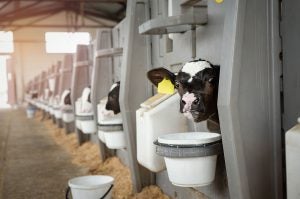After more than two years of uninterrupted growth, global milk production is down, with growth expected to dip into negative territory in the final quarter of 2021. Farmgate milk prices are on the rise, in line with higher commodity prices worldwide, but increasing costs of inputs, lack of labor, and unfavorable weather will continue to limit production, according to Rabobank, a Dutch multinational banking and financial services company.
According to the company’s latest dairy report, global milk supply growth halted in the second half of the year, bringing the market to levels not seen since 2014. Weather-related issues decimated Oceania’s peak production and margin erosion in the U.S. and Europe slowed growth. Production gains in South America were not enough to offset these developments.
This is the first year-over-year decrease since 2019.
“We anticipate a modest recovery in the second half of 2022, but that will require favorable weather and the tempering of feed costs,” says Mary Ledman, Global Dairy Strategist at Rabobank.

High feed prices and general input cost inflation are common themes across the major milk-producing regions. While farmgate milk prices are approaching new highs in Oceania, Europe, and the U.S., farm margins remain tight. Adequate milk prices across much of the world offset higher cost pressures. Nevertheless, the rising costs of inputs, lack of labor, unfavorable weather, and questionable feed quality will continue to limit dairy production.
Dairy exports also slowed in response to logistic disruptions, rising transportation costs, and elevated commodity prices — in addition to the supply reduction. The expected slowdown in import demand from China is needed to cool prices in the face of limited supply-side increases.
Consumers will see higher prices in 2022, negatively impacting demand
Despite rising inflationary pressures on dairy and food companies, consumers have yet to face sticker shock for dairy products in most countries, supporting current demand.
Rabobank expects that higher commodity prices from the second half of 2021 will be passed along to consumers in the new year. Eventually, as consumers face price increases, demand will be negatively impacted, particularly in emerging economies.
Other factors affecting the dairy industry
Among the other findings in the report:
- Dairy exports slowed in response to logistic disruptions, rising transportation costs, and elevated commodity prices.
- A slowdown in import demand from China is expected and is needed to cool prices in the face of limited supply-side increases.
“Consumers will be bracing for cost-of-living pressures through much of 2022,” says Ledman. “New variants of Covid-19, inflation, labor and logistic challenges, along with others weigh on the global economic recovery with the potential for global dairy markets to teeter or totter.”
Specifically in the U.S., Rabobank found that the U.S. milk cow herd has declined dramatically from its peak just above 9.5 million head in June. Since then 107,000 cows have left the milking herd in response to ongoing margin pressure.
Additionally, American cheese production remains elevated, and stocks have grown counter-seasonally from June through October, reaching 12 percent above year-ago levels. And multiple plans for new and expanded cheese manufacturing plants have been announced recently.


